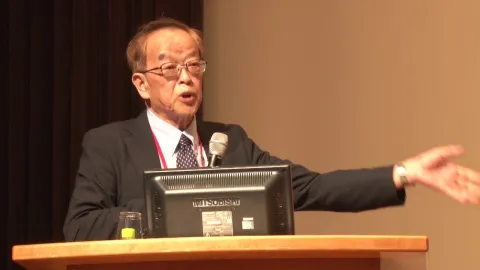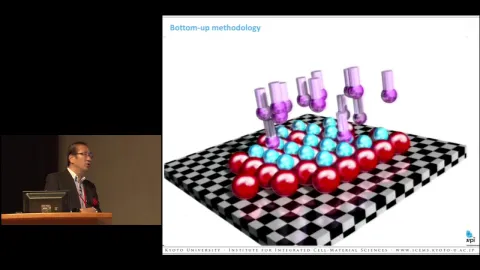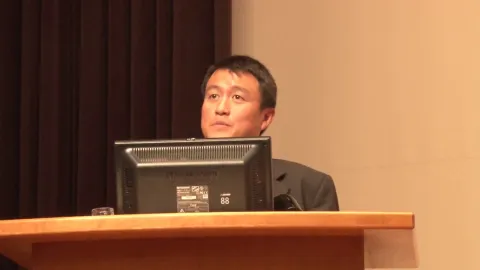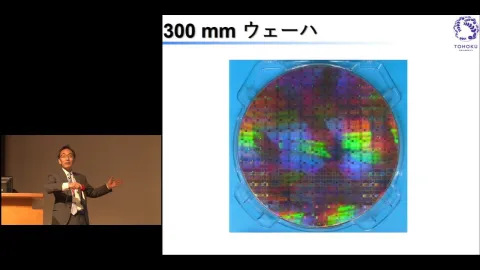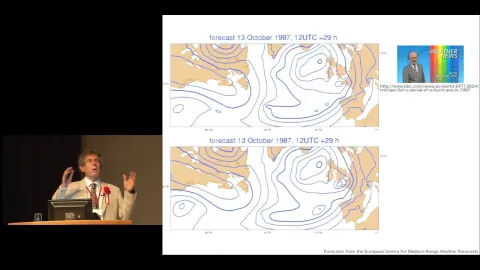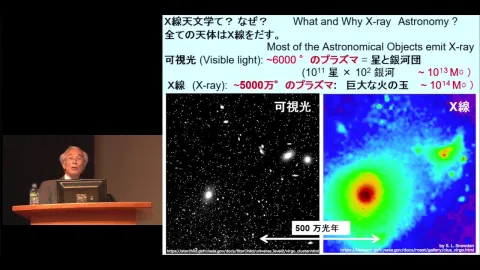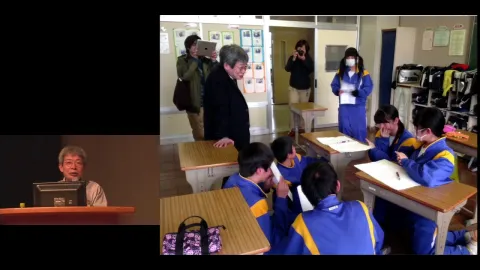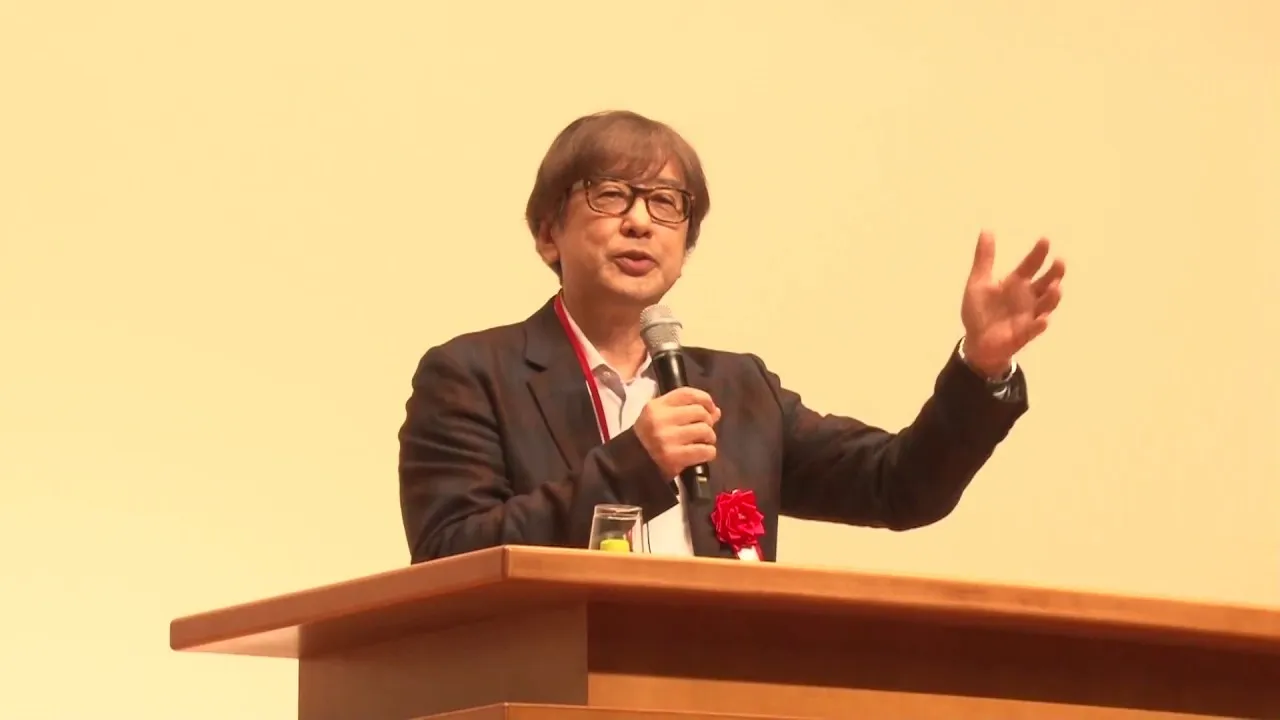
4th Kyoto University-Inamori Foundation Joint Kyoto Prize Symposium
http://kuip.hq.kyoto-u.ac.jp/
https://ocw.kyoto-u.ac.jp/en/opencourse-en/181
July 1, 2017
[Theater, Cinema]
Shinichi Nakazawa
Anthropologist
Director, Institut pour la Science Sauvage, Meiji University
Title of Presentation
“The Logos and Lemma of Art”
In the Upper Paleolithic Era, humanoids emerged as Homo sapiens and developed the same brain structure that we now possess. At that time they: developed language that made use of analogy; acquired the ability for pictorial expression; and invented music that had a scalar structure. In other words, Homo sapiens emerged in conjunction with the ability to make art.
Analogy is created by overlaying different fields of meaning. Prior to the Upper Paleolithic Era, human verbal communication was characterized by logos, with words placed sequentially according to syntactical rules. The adoption of analogy rendered Homo sapiens capable of using words for poetic expression, which was entailed the creation of analogic links and the generation of resonance between the parts and the whole through aural reverberation. The use of analogic language structured in this way points to a poetic and musical essence at the very heart of human language. Homo sapiens was born, therefore, when people began speaking a “musical language.”
As examples from European archeology show, Homo sapiens conducted rituals inside caves. We can imagine them in large, pitch-black spaces, drawing pictures on stone walls and singing chorally. Musical utterances in caves led to the discovery of natural harmonics, whose relationships led in turn to the concept of “identity” as people identified a fundamental pitch with the pitch that was one octave higher. Later, the pitches at a perfect fourth and perfect fifth were recognized, providing the natural basis for a pentatonic scale. With this discovery, human music became scalar, a trait that differentiated it from other types of music in the natural world, such as birdsong. Music emerged naturally from the human ability to create language with an analogic structure.
At the same time, it became possible for people to express themselves pictorially with a surprising degree of perfection. Cave paintings of running bison, for example, provide evidence of the intellectual capacity to intuitively and holistically comprehend the subject, project it, and draw it from a single point of view onto the flat plane of a rock wall. Conversely, these ancient artists were also able to imagine the entire animal on the basis of the partial information provided by a projected image.
Homo sapiens evolved with artistic abilities using brains that operated in a “bilogic” fashion by incorporating both linear “logos” and holistic “lemma” capabilities. This has determined the essential nature of human artistic activity to this day. It is impossible to discuss the future relationship between science and art without taking this fact into account.
この動画は、クリエイティブ・コモンズ・ライセンス“Attribution-NonCommercial-ShareAlike (CC BY-NC-SA)”が付与されています。 私的学習のほか非営利かつ教育的な目的において、適切なクレジット表記をおこなうことで、共有、転載、改変などの二次利用がおこなえます。 コンテンツを改変し新たに教材などを作成・公開する場合は、同じライセンスを継承する必要があります。 詳細は、クリエイティブ・コモンズのウェブサイトをご参照ください。
- 部局
- 分野
- タグ


